garrett keast, the powerful CONDUCTOR thread between america and europe
- Elisa Nori

- Sep 20, 2024
- 32 min read
That Americans are great possibilists is proven: the driving force and authentic optimism are the key to their success and that these gifts give the possibility to benefit for those who come into contact with them is beyond question.
So Garrett Keast, with that energetic push that transforms every occasion even the most adverse into an opportunity for continuous growth, founded the Berlin Academy of American Music: a chamber orchestra composed of the best musicians based in Berlin.
The goal is to perform and disseminate the works of American composers and American immigrants.
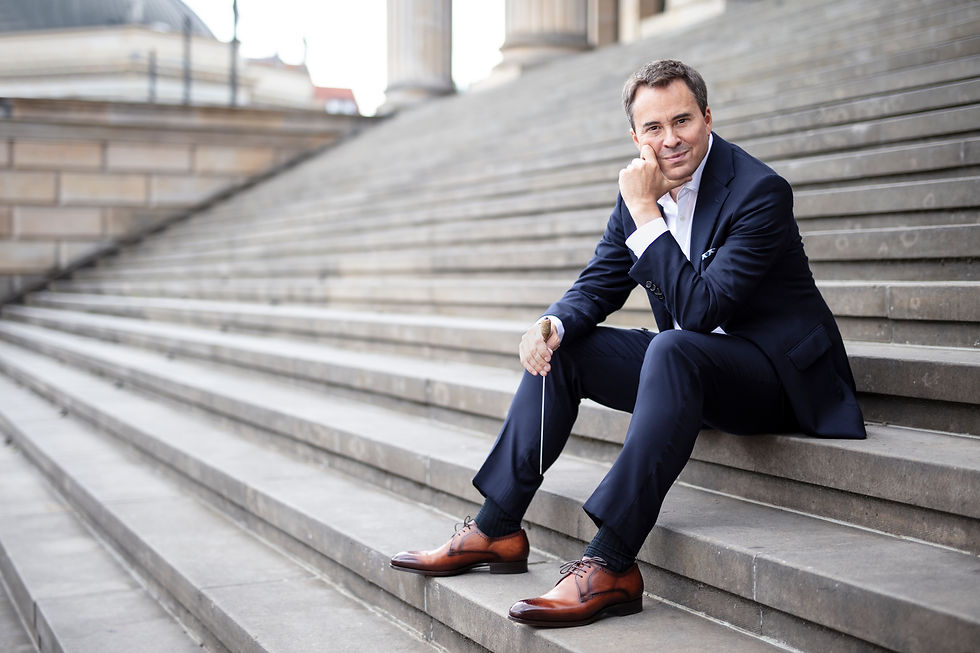
The pandemic has paralyzed the world, forced us to take time and ask ourselves many questions, saw us vulnerable but at the same time hopeful of a future balance;
and in this climate that Garrett Keast has made a dream come true through research and study...He formed the BAAM and then transmitted to each member of the orchestra, that energy necessary for it to become the perfect vehicle to tell the scores of an American repertoire capable of reaching even where it had not arrived before.
Being a cultural link is a responsibility, because it sees us as the main messengers in a context that is different from that of our native land;
being incorporated into it certainly proves the qualities of the ambassador.
With Transatlantic, which received 5 stars from BBC Music Magazine, das Orchester, Fanfare, Limelight recorded at Teldex Studios, Garrett Keast not only unites musicians from a mix of nationalities spanning five continents, but also features renowned soloists including Greek flautist Stathis Karapanos, Israeli soprano Chen Reiss, Berlin Philharmonic concertmaster Noah Bendix-Balgley and Berlin Philharmonic harpist Marie-Pierre Langlamet.
The album features American and American-themed works by composers Craig Urquhart, Igor Stravinsky, Avner Dorman, Toru Takemitsu and Aaron Copland.
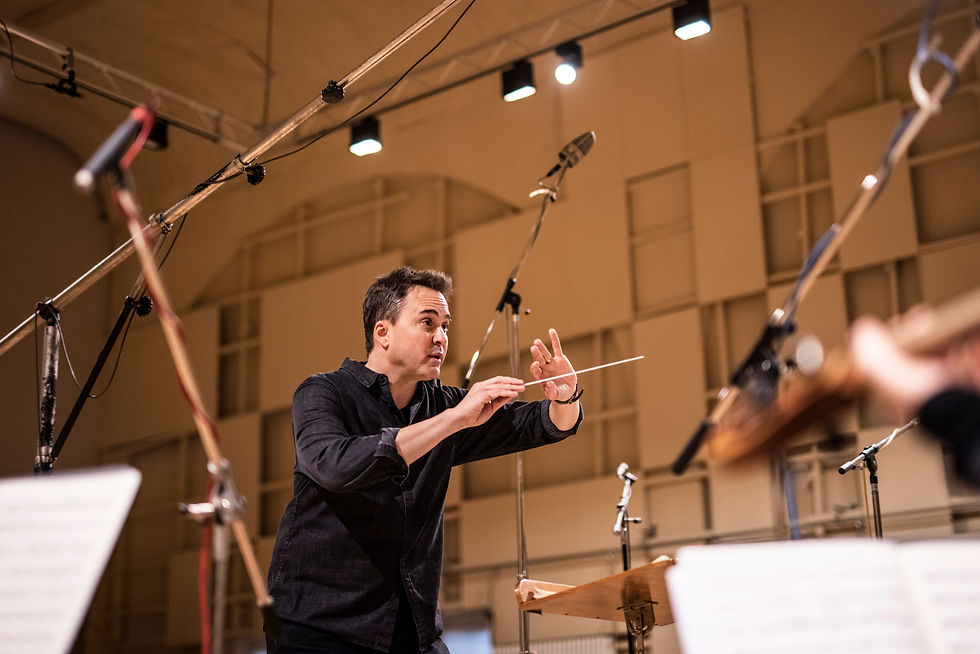

The American repertoire has names that we have a duty to know and study in depth: the legendary Leonard Bernstein, protagonist of the film "Maestro", directed by and starring Bradley Cooper, released in theaters in 2023; Bernstein's music has been used in cinema, in films such as "Rear Window" by Hitchcock and "Last Holiday" by Wayne Wang, Aaron Copland who also composed for several films including "The Heiress" winning the Oscar for best soundtrack, George Gershwin whose compositions have been used in numerous films and theatrical musicals from the classics with Fred Astaire and Ginger Rogers to the height of success with 'An American in Paris' by Vincente Minnelli. Among all of Gershwin's works, "Rhapsody in Blue" stands out, which became the title of the biopic about Gershwin by director Irving Rapper, shot in the United States in 1945.
Many performers, adapting it according to their needs, have performed with this composition that embodies the particularity and originality of the fusion between classical music and jazz. George Gershwin is one of the most performed composers of all time and the same relevance is found in names such as Irving Berlin, Cole Porter, the duo Richard Rodgers & Lorenz Hart and last but not least Jerome Kern, also creators of stars and stripes standards.
Cinema pays homage to Gershwin through the works of great names such as Woody Allen who uses Rhapsody in Blue in the film "Manhattan", Disney who includes it in the film "Fantasia 2000" and Baz Luhrmann who brilliantly uses it in "The Great Gatsby".
During the war, excellent names in the musical arts, performers and creators lived and worked in Hollywood or its surroundings: Rubinstein, Heifetz, Pjatigorskij, Rachmaninov, Stokowski, Iturbi, Horowitz, Szigeti, Schönberg, Stravinsky, Ernst Toch, Tansman and many others.
America has been a refuge for countless personalities, demonstrating the ability to incorporate multiple genres and multiple points of view, and still today it is strong in its fascinating heritage.
This is precisely what Maestro Keast structures his work on: to support inclusiveness, regardless of race, gender or nationality, thus opening the stage to both contemporary composers and those of previous decades, who have yet to be examined.
Music is a glue and no external circumstance should affect this aspect even if many in the past, unfortunately not only, for political issues, racial persecution, poverty, wars have had to revolutionize their lives as professionals and human beings.
The composer Toru Takemitsu developed his education by listening to Western music on the radio of the occupiers - in addition to jazz, especially classical music by Debussy and Copland, but also by Schönberg; famous among other things for having composed, in less than 40 years, the soundtracks of almost 100 films including "Harakiri" and "The Last Samurai" by Kobayashi Masaki, one of the greatest Japanese directors of all time; he also had contacts with the director Akira Kurosawa also considered one of the greatest filmmakers in the history of cinema, of whom we remember he edited the soundtracks of "Dodes'ka-den" which was nominated for an Oscar for best foreign film and "Ran" which in total won four awards including an Oscar and received twelve nominations, three of which for Oscars.
Igor Stravinsky also surrounded by the war and exiled goes first to Switzerland until he arrives in America; the same fate awaits other prestigious figures such as Sergej Vasil'evič Rachmaninov and Grigorij Pavlovič Pjatigorskij.
We often focus on technical skills, without taking into account that music is a message; it has always been the story in notes of the life of those who impress them on paper.
Beyond the skill, the truly precious aspect is that of capturing the "changes in tone", the inner evolution... because it happens in an essential way.
Just as an actor in cinema enriches himself every time he takes on a role and by making it his own, becomes a part added to his totality while the director directs it so that it has its apex through a film, so it is with music.
Can you perceive that intensity that distinguishes it?
What value does the work of an illustrious name in music that has temporarily or permanently left its roots to embrace others hold within it?
What does it add to our culture? What power does a different path, not only professional but also personal, contain?
And this is where the beauty of transmitting a baggage, inserting oneself into new contexts, comes into play.
Without integration, without contamination, without exchange we would be humanly and intellectually poor, and prey to the sole daily life in which we are immersed.
If we have the possibility of evolving it is thanks to those who have the courage to undertake unexplored paths even if this means embracing risk. We have numerous examples in the history of music and beyond, of how apparently negative circumstances have then borne memorable fruits.
Keast's professional leap has Paris as its protagonist and springboard, more precisely the debut at the Opéra de Paris; among other things, other great Americans brought into the repertoire by the Maestro, found inspiration and were trained in this city.
Keast's audacity is surprising, because it brings to Europe that American musical history that deserves to be included without forgetting the European repertoire; more precisely for logistics, German classical music which is one of the most appreciated in the world and has set a school for generations to come.
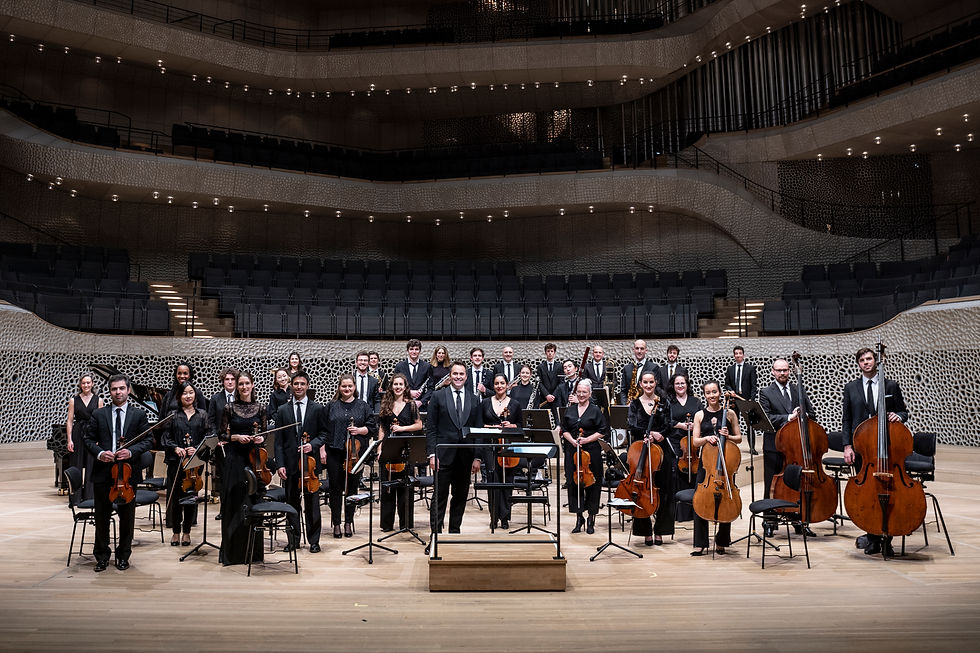
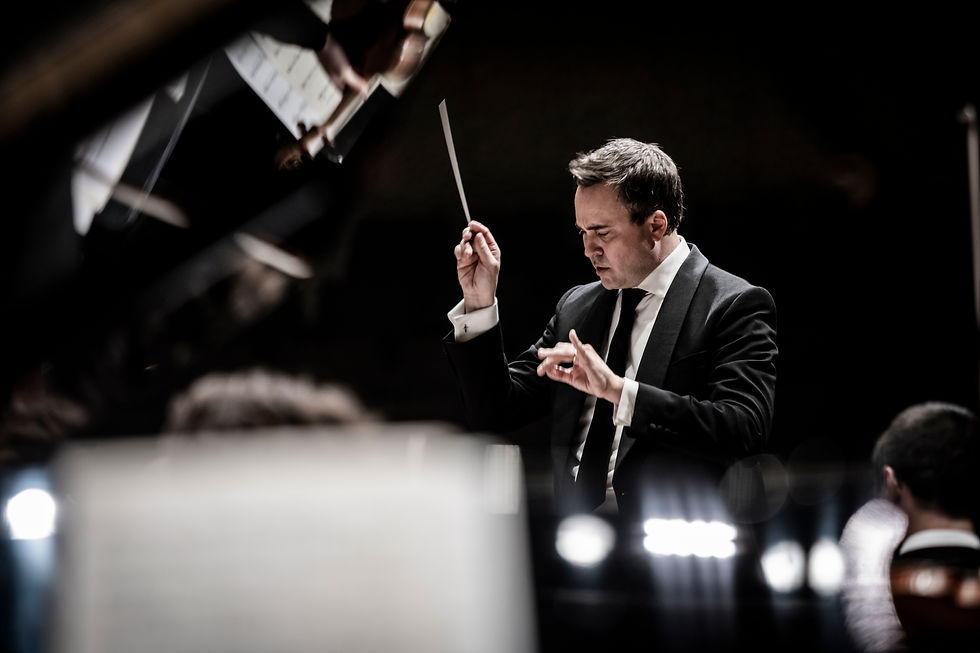
If we want to talk about American pillars, Broadway is without a doubt one of them. The introduction of sound in films revolutionized the world of cinema and everything was enhanced by the subsequent addition of the cinematic musical to the history of the theatrical musical. The growth and evolution of the genre occurred thanks to these two areas, whose notoriety had a real surge through the worldwide diffusion of film and currently thanks to the digital era.
The role of the recording industry and radio were also crucial, allowing the perfect integration between the musical theater genre and the jazz one, bringing substantial benefits both to the image of the stars and to the theater itself.
Two great Broadway stars, Alli Mauzey and Hugh Panaro, were accompanied by the Württembergische Philharmonie, directed by conductor Garrett Keast in the Bravo Broadway concert.
"Gypsy", "Kiss Me Kate", "The Wizard of Oz", "My Fair Lady", "Girl Crazy", "West Side Story", "Little Shop of Horrors", "Frozen", "Hairspray", "My Fair Lady", "Cabaret", "Chicago", "Les Miserables", "Mamma Mia!" and "The Phantom of the Opera" are some of the masterpieces brought in homage to an enthusiastic audience.
Maestro Keast, through the repertoire chosen with careful and compelling programming, passionately and competently divulges to the audience, the ability of pillars of the musical world to leave a legacy to music lovers not only of excellent interpretations of the traditional repertoire, but also pieces that have become famous with the general public, see precisely 'West Side Story' whose music by the immense Leonard Bernstein has had an enormous contribution to the world of performing arts; courage and freedom between the world of classical music and Broadway, like any brilliant trailblazer.
Maestro Keast's symphonic repertoire extends from Haydn and Brahms to Adams, Britten and Widmann. In the opera house, Keast has conducted masterpieces by American composers such as Bernstein and Glass to contemporary and iconic pieces by Unsuk Chin, Puccini, R. Strauss and Wagner.
The same passion, dedication and perseverance can be found in his words that renew the pace and repress the impulse, suggesting the expressiveness of an even more memorable performance...that of an entire journey to reach the podium.
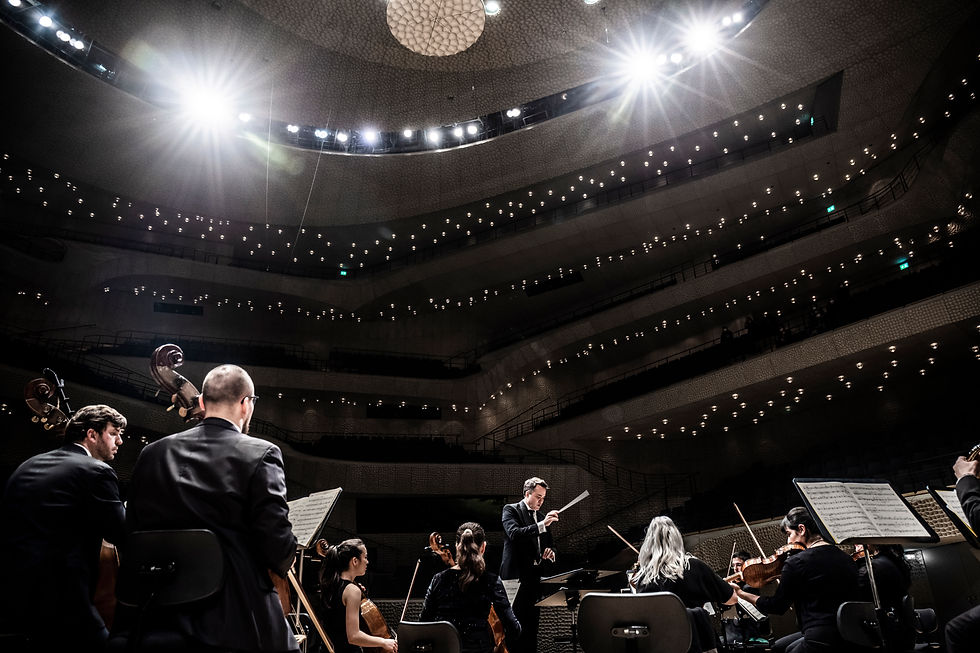
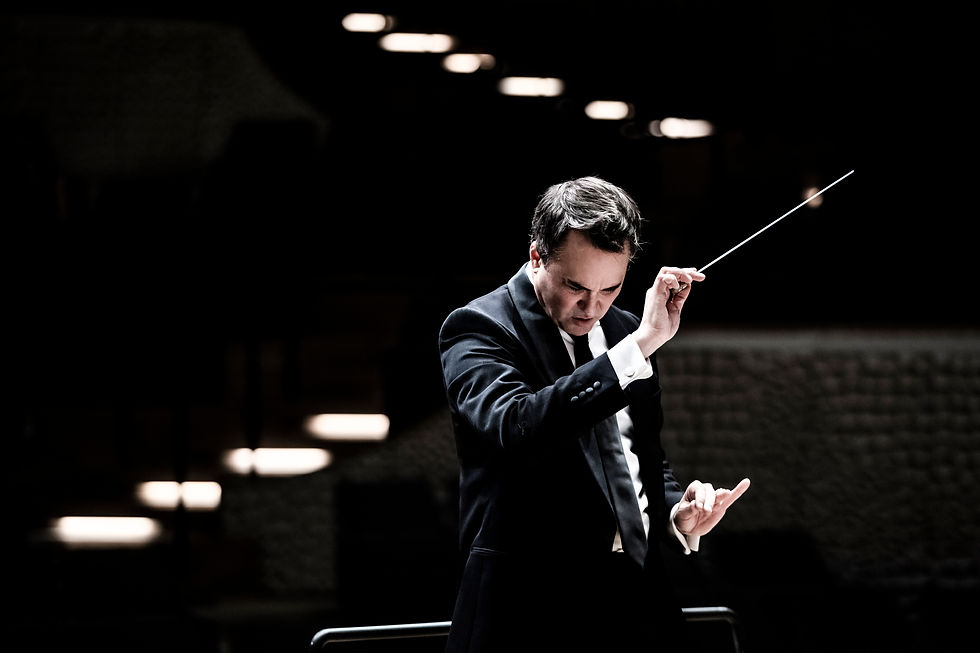
BIOGRAPHY
Garrett Keast is an American symphony, opera, and ballet conductor and founder of the Berlin Academy of American Music (BAAM).
A native of Houston, Texas, he has been a singer and instrumentalist since childhood.
Keast brings a passion for creating a holistic approach to opera and stage productions. His operatic credits include Faust (Opéra National de Paris), Die Zauberflöte (Deutsche Oper Berlin), La Bohème (Aspen Music Festival), Ariadne auf Naxos (Virginia Opera), Carmen (Opera San Antonio), Midsummernight's Dream in Tokyo, Der Fliegender Holländer (Theater Erfurt), Rigoletto (Theater Bremen), Don Giovanni (New Orleans Opera), and Bluthaus (Oper Bonn), as well as a critically acclaimed production of Così fan tutte at the Fort Worth Opera Festival, described by the Dallas Morning News as "the operatic experience of the year."
Keast began his career as associate conductor of the New York City Opera before launching his career in Europe with engagements at the Paris Opera, the Orchestre de Paris, the Deutsche Oper Berlin, and the NDR Elbphilharmonie Orchester. Today, he appears regularly at prestigious venues including the Elbphilharmonie Hamburg, the Concertgebouw Amsterdam, BOZAR Brussels, the Hamburg State Opera, the Seoul Arts Center, the Theater an der Wien, and the Festspielhaus Baden-Baden. Described as producing “a refined, focused performance” with “assured sensitivity” (Financial Times), Keast has conducted performances with orchestras including the Tonkünstler Orchester, the Deutsches Sinfonie-Orchester Berlin, the Philharmonisches Staatsorchester Hamburg, the Rundfunk-Sinfonieorchester Berlin, the Orchestre National Capitole Toulouse, the Philharmonique de Monte Carlo, the Atlanta Symphony, and the Los Angeles Opera Orchestra. Recent recording projects include Prokofiev’s Peter and the Wolf with the Konzerthaus Orchester Berlin and the Berlin Academy of American Music’s debut album, Transatlantic, which received 5 stars from BBC, Fanfare, Limelight and das Orchester magazines.
The 2024-2025 season begins in South Korea with concert performances of Tchaikovsky’s Fifth Symphony with the Bucheon Philharmonic and Bernstein’s West Side Story Symphonic Dances with the Jeonju Symphony Orchestra. Keast joins tenor Jonathan Tetelman for performances with the Copenhagen Philharmonic and will ring in the New Year at the Essen Philharmonie with the WDR Funkhausorchester, performing a Gershwin Tribute Concerto with pianist Makoto Ozone. He returns to the Ballets de Monte Carlo with Romeo and Juliet and Swan Lake, and makes his debuts with the Orchestra del Maggio Musicale di Firenze and the Orquestra de la Commitat Valenciana. In the United States, Keast will make his debut with the Houston Ballet. His Berlin Academy of American Music (BAAM) continues to command attention, appearing again at the Elbphilharmonie, the Berlin Konzerthaus, and on tour.
The 2023-2024 season included a live telecast with the Tonkünstler Orchestra Vienna (Bernstein and the American Songbook), as well as engagements with the Royal Swedish Opera, Deutsche Staatsphilharmonie Rheinland-Pfalz, Staatsorchester Braunschweig, Philharmonique de Monte-Carlo, and a Korean tour of Prokofiev’s Romeo and Juliet with the Ballets de Monte-Carlo and the Hankyung Arte Philharmonic. Keast concluded the season at the Atlantic Music Festival with a program with Midori. Repertoire highlights include John Adams’ Fearful Symmetries, Copland’s Appalachian Spring, Fazıl Say’s Istanbul Symphony, Gershwin’s An American in Paris, Missy Mazzoli’s Dark with Excessive Bright, Caroline Shaw’s Watermark Concerto, and Kurt Weill’s Symphony No. 2. Keast has also conducted performances of the Berlin Academy of American Music at the George Enescu Festival in Bucharest, the Elbphilharmonie in Hamburg, and the Konzerthaus in Berlin.
With distinguished appearances leading over sixty symphony orchestras and more than twenty opera companies on four continents, the conductor’s experience on the podium shows an extraordinary range. His symphonic repertoire extends from Brahms, Mahler, and Tchaikovsky to Adams, Britten, and Widmann. From the operatic canon, Keast has conducted masterpieces by contemporary composers such as Georg Friedrich Hass and Unsuk Chin to genre mainstays by Mozart, Puccini, Strauss and Wagner.
Keast has also conducted concerts with orchestras including the SWR Sinfonieorchester, Prague Philharmonia, Belgian National Orchestra, Orchestre National Bordeaux Aquitaine, Orchestre Philharmonique de Strasbourg, Royal Danish Orchestra, Oregon Symphony, New Jersey Symphony and Fort Worth Symphony Orchestra.
At the Hamburg State Opera, Keast enjoyed a long association with John Neumeier’s Hamburg Ballet, where he conducted over 130 performances in eight productions. Additionally, he conducted Swan Lake with the Opéra National de Paris, Don Quixote, Romeo and Juliet, and The Nutcracker with the Royal Swedish Ballet, as well as several productions at the Finnish National Opera & Ballet, the Royal Danish Ballet, and the Hannover State Opera. Connection is a recurring theme in all of Keast’s endeavors. The Houston-born conductor is a leading interpreter of his homeland’s repertoire, continually developing relevant and thought-provoking programs. In recent seasons, he has conducted programs that premiered works by Missy Mazzoli, Anthony Davis, Caroline Shaw, David T. Little, David Lang, and Avner Dorman. Other American programs include John Neumeier’s Bernstein Dances at the Los Angeles Music Center and Baden Baden Festspielhaus, a Broadway program at the Concertgebouw Amsterdam, a Bernstein Gala with the Rundfunk Sinfonieorchester Berlin, performances of the Bernstein Mass at the Dresden Frauenkirche, and Copland’s Third Symphony with the Fort Worth Symphony Orchestra. Presenting a fusion of iconic and modern American and American-themed works is also the focus of the Berlin Academy of American Music (BAAM), founded by Keast at the height of the pandemic. The orchestra’s debut recording, Transatlantic, was released in October 2021 on the ONYX Classics label. The orchestra has quickly gained recognition for its exceptional quality of performance and programming, resulting in return invitations, sold-out shows, and touring developments.
Garrett Keast was a mentor to Christoph Eschenbach at the Houston Symphony and served as his assistant conductor for opera productions and international tours at the Paris Opera, the Vienna State Opera, the National Symphony Orchestra, the NDR Elbphilharmonie Orchestra, and the Pacific Music Festival. Keast studied at the Aspen and Tanglewood Music Festivals and was an assistant conductor at the Dallas Opera, where he was a recipient of the Bruno Walter Career Development Grant.
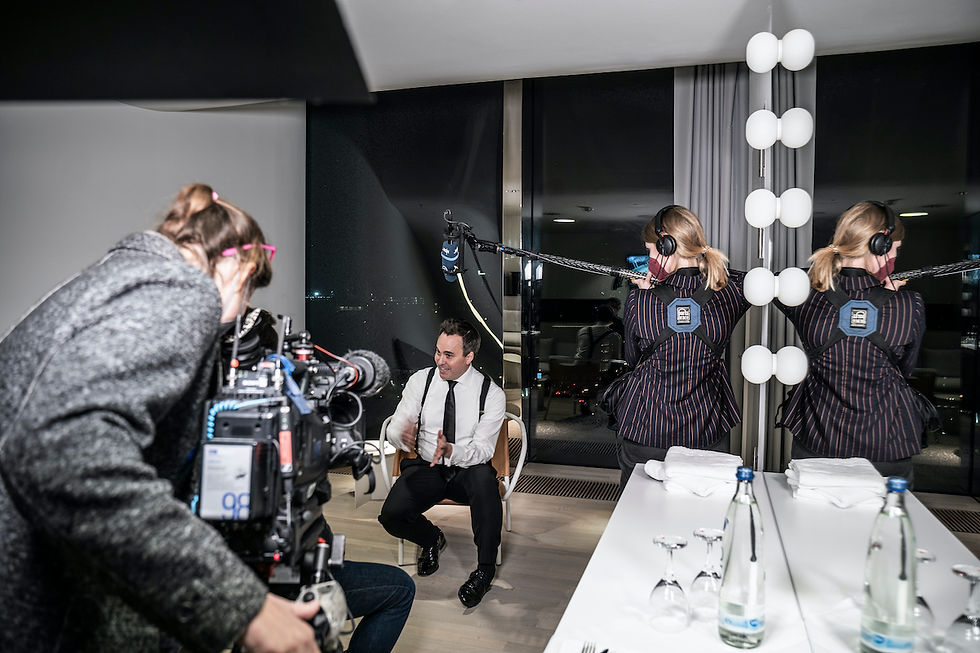
Maestro Keast, among the great names you have celebrated, through your programming that embraces a decidedly brilliant and ingenious repertoire, Igor Stravinsky stands out.
Multiple genres with as many creative phases distinguish him: ballet, opera, sacred music, stage music, symphonic, chamber music; a citizen of the world moved by a perpetual interior revolution, a peculiarity of a prolific mind.
Stravinsky's legacy includes over 7,500 pages of musical scores.
The only sector with which he has never managed to get in tune is film music, finding the rigid clauses both productive and temporal for him insurmountable; conforming, modifying and manipulating the music for the final editing were unacceptable demands where they distorted his work... note the affair with Disney and the film "Fantasia".
Nevertheless, over time he found himself contributing his works to the soundtracks of films, authors and genres among the most disparate.
The United States was the country in which he lived his most daring compositional phase, undergoing the fascination for jazz and frequent circumstances that linked him to the greatest swing clarinetists of the time.
What are you most passionate about transmitting about the figure of this great twentieth-century composer and which of the works you have selected by him have given you the most satisfaction in performing? Are there compositions that you would like to tackle in the near future?
Garrett Keast - I love how Stravinsky adapts to the American aesthetic, you know, as a composer.
I love him... I love all his compositional output and of course the music he wrote even before he came to the States, when he was mainly based in France; the great ballets like "Le Rite du printemps"...just incredible, a masterpiece. All his ballets are, and so many of his other works.
I've always loved his neoclassical period and the piece that excites me the most in recent years... the one that excites me the most is "Dumbarton Oaks", which premiered in the early 1940s in New York in Washington D.C., at the Dumbarton Oaks estate; he was supposed to conduct it but he was ill and so Nadia Boulanger conducted in his place.
Clearly a sublime piece, which evokes and is connected in a way to Bach's Brandenburg Concertos; so fresh, so modern and the writing is so sophisticated, the metrical arrangements are so clever and the harmonies are so good. So, I just love that piece.
It was recorded with the brand new orchestra, when we played together for the first time as the BAAM orchestra (Berlin Academy of American Music), in January 2021 here in Berlin during the pandemic with distancing and masks.
It was an undeniable experience and by the way the recording came out wonderfully.
We have received a considerable number of positive and enthusiastic reviews;
I also hope that anyone reading this, can go and look for our recording made for the debut album "Transatlantic", which contains the concerto: "Dumbarton Oaks" by Igor Stravinsky.
So yes, I am crazy about Stravinsky, always crazy about Stravinsky!
You were born and raised in Houston: a singer and instrumentalist since childhood, trained by Christoph Eschenbach, who conducted the Houston Symphony Orchestra, you later moved to New York becoming Associate Conductor of the New York City Opera and Permanent Conductor of the Queens Symphony Orchestra. You flew across the Atlantic, to Paris to the Opéra National de Paris for work commitments where you enhanced your figure as a conductor, and then moved to the Deutsche Oper Berlin. In 2021 you founded the Berlin Academy of American Music.
In this evolution, which has allowed you access to countless and prestigious symphony orchestras and more than twenty opera companies on four continents, what other challenge would you like to face? Which of those already faced deserve a particular in-depth analysis, which can be a starting point for those who follow you and dream of one day embarking on the same brilliant career?
Garrett Keast - I was born and raised in Houston, Texas, and went to college at the Butler School of Music at the University of Texas at Austin where I was a trombonist and choral singer.
I then had the opportunity to become a student of the Houston Symphony Orchestra and Christoph Eschenbach in the late 90's after his tenure there, the Houston Symphony Orchestra was a fantastic orchestra to be around at the time and I grew so much from that experience, which then took me to New York and became an associate conductor at the New York City Opera, working with different orchestras.
I got my first agent and met some really great people, which is so important in building a career and one of those people was Craig Urquhart from the Bernstein office who helped me make my way to Europe.
When it comes to challenges, oh my gosh...there have been so many challenges in becoming a conductor and continually trying to evolve into a better conductor, which I love...I always love that challenge!
I love the job that I have in front of me every day: making music with my hands, talking to the orchestra, inspiring the orchestra, inspiring the audience, bringing the whole group together where everyone can feel good together, making music together.
I just love that role and it always brings challenges, especially because you go to new orchestras; I'm a guest conductor a lot and it's amazing, it's a great experience every time.
A big challenge that I'm looking forward to is becoming the head of a symphony orchestra; one of the things that I'm really working on and want to make progress towards.
I'm the head of my own orchestra here, the Berlin Academy of American Music in Berlin.
I feel really comfortable in the role and I have a lot of programming ideas and a lot of organizational ideas; I'm looking forward to it and I think it's going to be a great challenge.
Yeah, I think it's the transition to a position of music director, principal conductor.
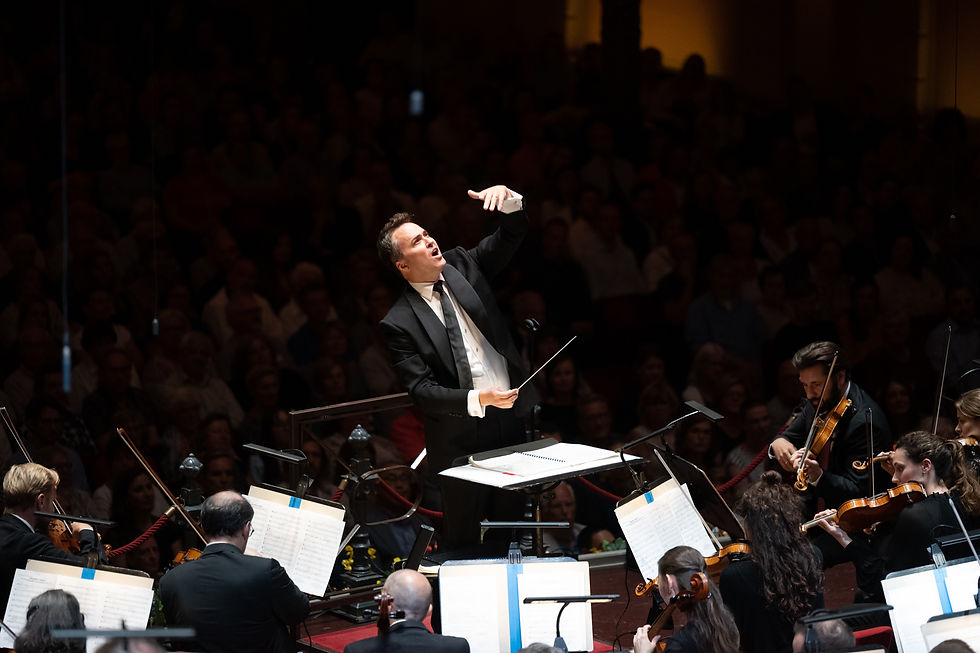
From New York to Berlin via Paris: Maestro, your goal was outlined with the BAAM, with which you aim to perform and disseminate the works of American composers and American immigrants. You are the indispensable link between the public and musicians, especially because you are the spokesperson of American ideals and stories that are part of your roots.
You represent that country that has welcomed many people, who arrived with the wave of forced migration from Europe and beyond; the regenerating effect and the exchange of experiences were the response to the events that have conditioned and marked the lives of so many individuals.
How does the public experience and welcome this noble project of yours and what feedback are you perceiving? What improvements would you like to make so that freshness and vitality can be spread, with the introduction of lesser-known works, thus clearing some environments from redundant conservatism?
Garrett Keast - In a way it's incredible but as a child, growing up as a musician, I always thought I was going to go to New York; you know, that's where I set the next step, a big step.
From New York it was a given for me, that I was going to move to Europe and so it was; I had some luck and some things always work out after many tries.
I found my way, the answer to my path...and so yes, it was auspicious to go to the Paris Opera with Christoph Eschenbach as his assistant in a big production of Paul Hindemith's "Mathis der Mahler" in 2010, while I was still living in New York.
Amazing experience!
I was already making trips to Berlin a couple of times a year from New York, also going to other places in Europe but it was in Berlin that I made some crucial contacts; somehow my name got to the top of the list at the Deutsche Oper Berlin to basically become a Kapellmeister.
There was an opening, because suddenly the other young conductor left without enough notice and they needed someone as soon as possible; I was a good fit, so I joined the Deutsche Oper Berlin.
My wife and I were newly married, but we left and moved to Berlin; we found an apartment through some friends and worked our way up.
So I started my career in Germany and it was just indescribable, but what I think is really great, in addition to being a guest conductor all over Europe for the last ten years, is what I realized during the pandemic.
I love working on American music and I get to conduct it quite often, because people often think, “Oh well we should ask Garrett Keast to conduct Bernstein’s work, Gershwin’s work, Copland’s work, Charles Ives’ work… Caroline Shaw’s work or Missy Mazzoli’s work,” and so while I was asked every year, just a couple of times to conduct those works, with symphonic works like in Europe, during the pandemic I realized instead that I could make a niche out of it and since I wanted to record some projects with some friends, we made this first album together with the orchestra The Berlin Academy of American Music; it was not intended for it to become a real symphony orchestra, but a real chamber orchestra that could autonomously proceed and somehow it found its legs, its legs.
Everything took shape and life, so I kind of developed the orchestra to be in this position, in this transatlantic role, dealing with the cultural exchange between the United States and Europe; all this sharing music, sharing composers, telling stories of composers who fled Europe and found asylum in the United States, in some cases returned and vice versa.
I highlighted great composers like the Israeli-American Avner Dorman who lives in Pennsylvania, I discovered the magnificent works of Missy Mazzoli who lives in New York City and composes for today's audiences, I remembered Ursula Mamlok who fled Germany before the war, ended up teaching and composing at the Manhattan School of Music for many many years; so many interesting stories: Bernstein, Gershwin, bringing these pieces to life in Germany, in Europe on tour, in the Elbphilharmonie, in the Konzerthaus in Berlin but playing them with a real grip, like the American one...giving a punchy feeling.
That's what I love to do.
I also think that BAAM has something special to do, a mission to incorporate the thoughts and feelings of America into Europe and vice versa...sharing...sharing these ideals. I hope it succeeds...we are trying.
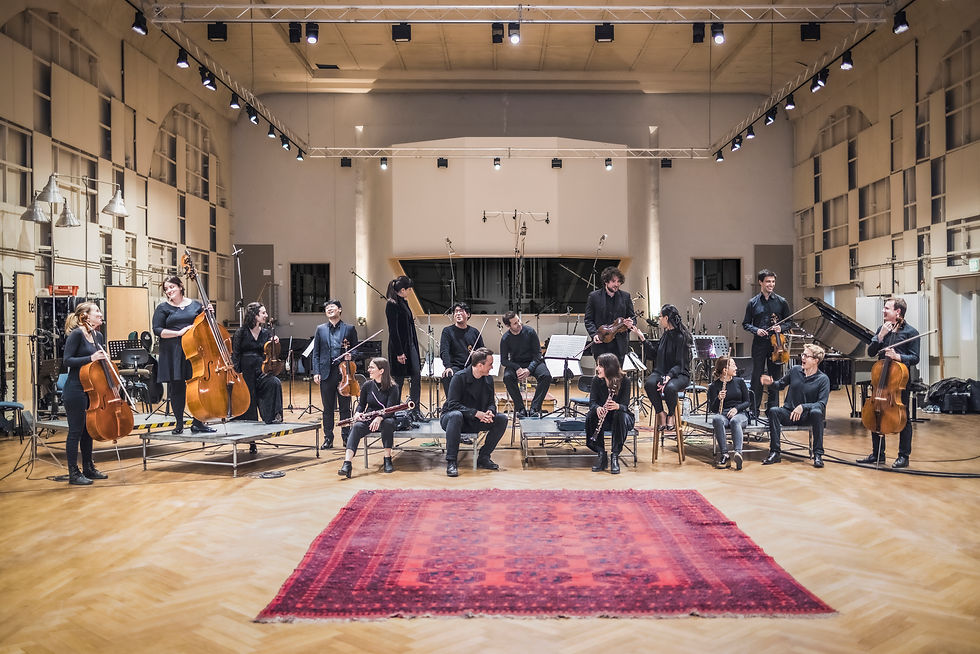
BAAM's debut album, "Transatlantic", released by the ONYX Classical label in October 2021 is the most precious product of your work; a goal that has found its maximum expression through the union of intents and ideas of great professionals.
I took the time to listen to it and I personally find the final part of the album with Copland's "Appalachian Spring" performed in a sublime way. What can I say... the whole album is a precious gift.
But let's start from the beginning: the album begins with Stravinsky's "Dumbarton Oaks" which reappears later with the aria "No Word From Tom" from "The Rake's Progress", with the Israeli soprano Chen Reiss and the Icelandic baritone Ólafur Sigurdarson.
After the opening with Stravinsky, Craig Urquhart's "Lamentation for Flute and String Orchestra" is revealed, recorded with the award-winning flutist Stathis Karapanos and featured in the film "Lamentation" by Boomtown Media, screened at various film festivals in Europe.
It is then the turn of the Israeli-American composer Avner Dorman with "Nofim", a group of four movements for soprano and ensemble with texts in Hebrew where soprano Chen Reiss, violinist Noah Bendix-Balgley, pianist Chelsey Padilla and percussionist Lukas Böhm excel; follows the intuition of Tōru Takemitsu with "Toward the Sea" which was commissioned by Greenpeace for its "Save the Whales" campaign divided into three sections: "The Night", "Moby Dick" and "Cape Cod" (the reference to Herman Melville's novel "Moby Dick, or The Whale" is evident, a masterpiece of American literature, one of the arts in which the composer was dedicated to ranging beyond cinema, painting and philosophy) where we find the harpist Marie-Pierre Langlamet and Stathis Karapanos.
Different styles, geographical origins and generations to confirm your intent as a glue and musical narrator of talents... your vision of the world and your infinite inspirations that embrace many lands, including America.
Listening creates vibrations and an inner resonance that perfectly tune with your project. After a few years, since this album came out, how do you experience the results obtained and how have you consolidated your intentions and desires over time?
Garrett Keast - Thank you so much for listening to Transatlantic, our debut album on the Onyx Classics label.
Yes, the recording has been out for almost three years now... I can't believe it...
With this recording, the Berlin Academy of American Music has really come to life; we've kind of established ourselves with that recording and some really great reviews we've gotten from the BBC and many others.
It's a really eclectic mix, a nice mix of pieces.
Yes, as you say: "Dumbarton Oaks" by Stravinsky, "No Word From Tom" from "The Rake's Progress", also by the same person; we have this wonderful friend of mine, the Israeli soprano Chen Reiss and my other friend, the Icelandic baritone Ólafur Sigurdarson.
And also my dear, dear friend and mentor, Craig Urquhart, with his wonderful piece, "Lamentation for Flute and String Orchestra", together with Stathis Karapanos, an extraordinary flutist.
So "Nofim" by Avner Dorman with Noah Bendix-Balgley, Chen Reiss, Stathis Karapanos and a really great ensemble.
Great works that we bring to life.
And you know, these rousing pieces including "Toward the Sea" by Takemitsu.
I admire this work.
It has the American component, because the story is all written around Melville's Moby Dick.
A very fresh recording, which I am proud of. We are very proud of it.
So thank you for listening to it and I hope that many people will listen to it, after reading this interview of ours.
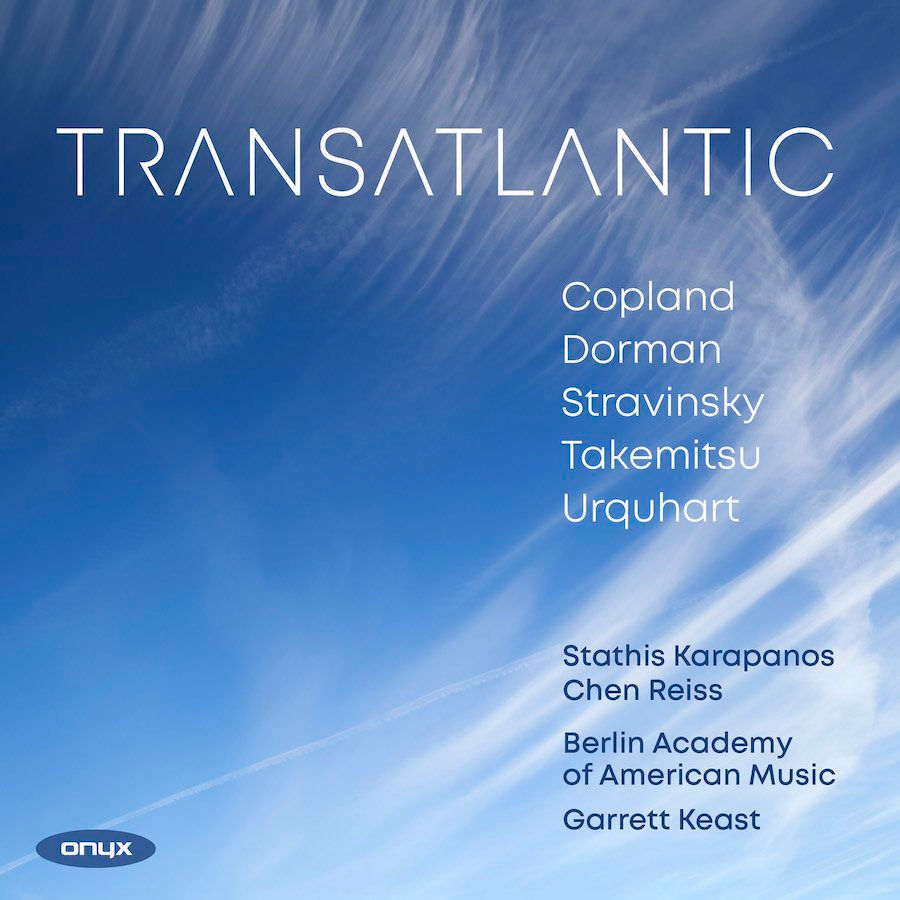
The link between composers and cinema has always been total or on the contrary, conflictual...and yet directly and also indirectly, the best have contributed through their compositions to accompany the film industry.
Aaron Copland won the Oscar with the film "The Heiress" directed by William Wyler who we know for films such as "The Best Years of Our Lives", "Roman Holiday", "Ben-Hur", "Funny Girl".
Toru Takemitsu composed the soundtracks of almost 100 films alongside directors such as Kobayashi Masaki and Akira Kurosawa; Leonard Bernstein indelible with the famous music for "West Side Story", whose first film adaptation directed by Jerome Robbins and Robert Wise obtained 10 Oscars and the second film adaptation of the musical to direct it, was Steven Spielberg.
And then "On the Town", directed by directors, dancers and choreographers Gene Kelly and Stanley Donen based on the ballet on a score by Bernstein and choreographed by Jerome Robbins, "Fancy Free".
Cole Porter and George Gershwin who, in addition to having a brilliant success on Broadway, we find them in films that are pillars of cinema; the first composed for films such as "Born to Dance" and "High Society" while the second's notes can be found in "Shall We Dance" and "A Damsel in Distress", without forgetting the brilliant use of his memorable "Rhapsody in Blue" by directors of the caliber of Woody Allen and Baz Luhrmann.
On the other hand, Stravinsky's relationship with the film industry was conflictual; two years after "Fantasia", the offer to score John Farrow's war film "Commandos Strike at Dawn" for Columbia arrived, but his work seemed too "modern" to the producers, who were intolerant of accommodating the demands of the avant-garde in soundtracks.
Already annoyed by the "Fantasia" experience, he withdrew the music, partially incorporating it into the "Four Norwegian Moods".
These are just a few of the many examples that could be given, regarding the composers you love. It is well known, also through your notable curriculum, your approach to opera and theatrical productions... while I would like to know, Maestro, what your connection with cinema is.
Since you have an intermediary role that you assume every time you pass the music from the performers to the audience... I would like to know your intimate experience, when you see that same transport through the big screen.
Garrett Keast - I don't have much direct experience in directing film music, but I do have a lot of experience in listening to and watching films; just recently, my two young sons, Oliver and Elliot, and I were watching Harry Potter over the summer holidays and I thought, "I never really knew that music." "I never knew those stories or those John Williams scores." But then I said to myself, "Wow!" "This music is not bad, in fact... it's beautiful and enjoyable."
What I really appreciated was that the boys were passionate and immersed, and that's what I think is the most important.
I hope it's not too much of a cliché to talk about such a famous composer as John Williams, an American composer, who has written the scores for films like "Star Wars," "Superman" and many, many others; Harry Potter is one of the recent ones.
What I think about film music, I think about musical theater in the same way. Musicals like "Chicago", "The Phantom of the Opera", "Les Misérables", "Candide", "West Side Story", these kinds of great pieces... "Show Boat", "Carousel" are wonderful! Wonderful entry points into classical music, into the concert theater, into the concert hall.
I love opera. I love ballet. I love musical theater.
But sometimes it's important to have music that is really accessible to the public; and that's exactly what the Harry Potter score is.
It's great symphonic music that is accessible very quickly to a young audience, to a new audience; a gateway to classical music.
I want BAAM, our orchestra, to focus on American classical music.
To be an entry point for people who say, "Oh, I like that!"
"I want to go see that concert!"
It will further lead them to go see other concerts, with other great orchestras.
So yes, it's important to create accessibility for new audiences.
The orchestra has actually been approached a couple of times to record for film but the opportunities have not materialized.
We haven't done it yet, but it's been asked and we're very open to it.
The scores are so moving, so effective...they really drive the plots of the films and contribute to the atmosphere and drama.
I'm fascinated by that.
In concert, I discover a lot of examples of film music, you know, and it's so similar to Mussorgsky's "Pictures at an Exhibition." So much music in there.
It's so colorful, so lively and cinematic.
In your programs you have given space to the preview presentation of the works of excellent names in contemporary music: the American composer and pianist Missy Mazzoli, the Danish composer and cellist Josefine Opsahl, the American composer, violinist and singer Caroline Shaw, the Israeli composer and pianist Aviya Kopelman.
This proves that women are also capable of leaving a decisive artistic and cultural mark, distinguishing themselves through their talent and knowledge.
It is necessary to continue to promote integration and variety in the sector, guaranteeing equal opportunities regardless of gender.
According to some surveys, women are more often directed towards a career as an interpreter and not towards, for example, that of orchestral conducting, a role still very much dominated by men.
Yet I believe that beyond the statistics, which still see women at a disadvantage compared to the most prominent positions very often held by men, there are many experienced professionals who deserve to be listened to before being "seen".
Maestro, what do you think about this?
Garrett Keast - I really like this new attention the world has on women composers and so I love the idea of really delving into American and beyond.
One example is the American composer Missy Mazzoli, whose "Dark with Excessive Bright" we performed and premiered; the German premiere was on June 4th this year at the Elbphilharmonie in Hamburg and it was a great performance.
Not to mention this wonderful young violinist Charlotte Thiele; a truly talented violinist.
We also had the world premiere of the Danish composer and cellist Josefine Opsahl...her piece is called "A Mass of Stars Block the View"; just an incredible piece.
We brought it to life there and now we have some recordings of pieces that are going out on social media as well: an amazing young Danish composer.
And that's what it's all about...we're about transatlantic composers, we're about showcasing Europeans, Americans and I think that's really significant; we performed a lot of Caroline Shaw's work and a wonderful piece by the Israeli composer Aviya Kopelman, a new friend of mine who now lives in Berlin.
Yes, women write great music and honestly always have... there are a couple of pieces I conducted last year by Florence Price and many many others including Ursula Mamlok. I am very much involved and interested in the subject.
I believe, without a shadow of a doubt, that women write extraordinary music and it is time to focus and shine a light on that. And it is a wonderful time.
It is a wonderful time for that.
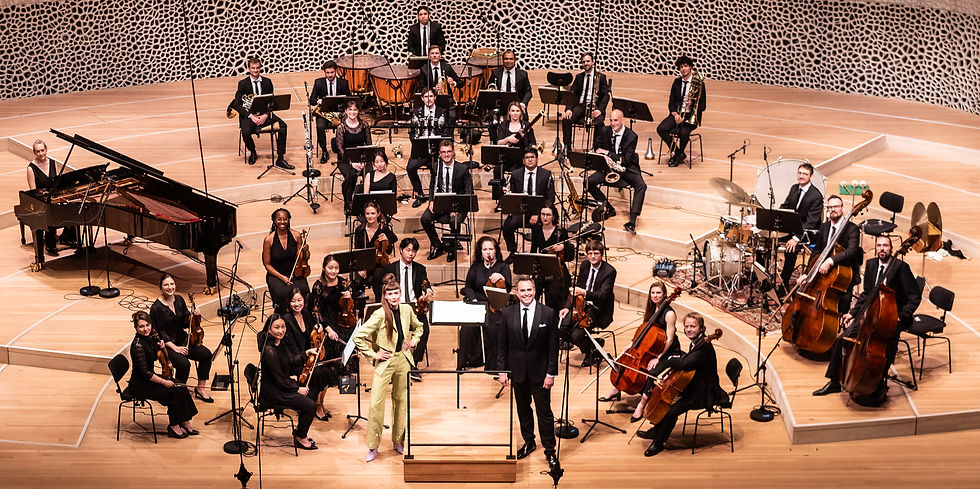
The apparently most difficult moments always hide a decisive turning point and you, Maestro, have made this wisdom the driving force to realize a dream, a goal... precisely during the pandemic.
There are many figures in the musical world who have distinguished themselves precisely by coming from unfavorable, if not downright hostile, contexts or circumstances.
I believe it is essential to know a person's path, beyond the cultural baggage that he leaves or has left, because even if the man does not necessarily coincide with the artist I believe that the professional cannot help but consciously or unconsciously tell his human experiences, subsequently transferring them to another level such as that of music or any other discipline; the aim is to reach a recipient, a listener so that this can elevate and in some cases redeem the man himself.
There is no work in music that is not either a brazen dedication to life or on the contrary contained and hidden; in both cases there is a communicative need that goes beyond mere technicality. You who convey this message through notes, find yourself making your own every time a piece of another person's life... Which are the figures you have directed and who have aroused in you emotions that I would dare say were irrational?
Garrett Keast - During the pandemic everything was shut down, all my work was cancelled. I was working at the Stockholm Opera when everything stopped and big contracts were cancelled; a critical time.
I came back home here to Berlin with my family and it was nice, in many ways, because we had more time to be together.
But then I started to realize that I had to do something with my time.
The world was paralyzed, orchestras were closing and some orchestras never came back... but it was the best time for me to start a new orchestra.
So I think it's incredible that the most difficult time of the last 20 years of my life was what gave birth to BAAM.
I had time to focus on a new direction, a new path for myself but also for music.
When it comes to emotions in music, I have a passion for it, for people and collaborating with groups of people.
I like teamwork, I like bringing together and creating a team;
it's an incredible challenge to go to an orchestra you've never been with before and somehow create a beautiful atmosphere in the room, work in perfect synergy.
You need a productive feeling and that transformative spirit of: let's conquer this piece of music, let's learn this piece of music and play it with our best motivations and our best qualities...quality of execution.
Let's bring it to the audience, let's impress them, let's share it with them.
Push them forward with their enthusiasm and their inspiration for... this incredible work of art, yes... work of art.
To put my heart in their hands, to share my emotion for the music, immediately showing this outpouring of care and love for it.
It's compelling to externalize and involve with this intensity the audience and the orchestras.
I think it's important to give another thing too: I have to believe in my work and at least the way I make music, I have to give them everything, I have to give them all my energy and then it works; they will play their best and give their best.
I love this work and honor it by sharing my absolute love, thrill and spirit for music.
More irrational moments, regarding BAAM, were when we were together on stage and unforgettable situations happened, especially at the Elbphilharmonie in Hamburg.
What I remember most fondly were the incredible, strong and energetic responses of the audience at the end of our performances.
2023 saw the overwhelming premiere of "Tanyaderas" by Avner Dorman to thunderous applause; we had planned an encore and their great response, their warmth... gave energy to me and the whole orchestra.
I returned to the stage, raised my finger in the air to silence the audience and simply said: "ZUGABE??". The audience responded forcefully: "Ja!!!".
I of course said: Candide Overture by Leonard Bernstein.
Recently it was announced that a new society was formed in the United States, "Friends of the Berlin Academy Of American Music". The society is based in New York and aims to promote and support the activities of BAAM in Berlin, Europe and abroad.
This will undoubtedly stimulate even more interactions, opportunities for contact and collaboration with people from all over the world. I find this decision extremely exciting! A decisive if not fundamental move, given that it is your homeland and the musical history that distinguishes it.
Can you tell us more about this?
Garrett Keast - Thank you very much for your question about our new organization in the United States that we formed and founded this summer called "Friends of the Berlin Academy Of American Music".
It's a new non-profit organization incorporated in the State of New York.
Now we're really in the last week or so, waiting for our IRS (Internal Revenue Services) certification which is essential for us and we should be getting that shortly; so yeah, it's a very American thing that we're doing.
This organization is about fundraising in the United States and so this year, when we get certified, we'll have our first fundraising campaign.
The idea is basically to raise significant funds every year for the Berlin Academy Of American Music and some of our activities will happen in the United States;
the great thing is that we have great friends of the orchestra who are on the board of directors both in New York and in Houston where I was born.
We also have some friends in Dallas in the Fort Worth area, in the Austin area, in Los Angeles, San Diego and we are planning to organize events, cocktail parties, small concerts as fundraising events, every year.
A way to complement what we are doing to raise money in Germany and we appreciate everyone's help.
In the coming weeks you will see more and more about this, on our social media.
The 2024-2025 season will also see you in Italy at the beginning of next year, at the Teatro del Maggio Musicale Fiorentino with two ballets: "Romeo and Juliet" by Prokofiev and "Swan Lake" by Tchaikovsky. What is your relationship with Italy?
Garrett Keast - Soon I'm going to Korea to conduct Tchaikovsky's Fifth Symphony near Seoul with the Bucheon Philharmonic Orchestra at the Bucheon Arts Center, I'm conducting West Side Story Symphonic Dances in Jeonju with the Jeonju Symphony Orchestra, and with the WDR Funkhaus Orchestra I'm playing a big New Year's program in the Philharmonie Essen on the 31st of this year; these are very exciting programs.
There's another thing I do... as well as I've conducted a lot of ballet for the last ten years, especially with the Hamburg Ballet but my time there is over because John Neumeier has retired now; I conduct ballet, you know, two or three times a year and one of the big companies I really enjoy working with these days is Les Ballets de Monte-Carlo, so I work with them regularly.
That was last year in Korea and this year in Monte Carlo on a big ballet by John Adams which was really exciting; Fearful Symmetries by John Adams is a piece we performed that really suits me...a very American piece of music...incredible.
I was invited by Jean-Christophe Maillot, the director of the Monte Carlo Ballet, to collaborate on the staging of "Romeo and Juliet," which I have conducted before, and "Swan Lake"; they are at the Teatro del Maggio Musicale Fiorentino, the famous theater in Florence, so I am really looking forward to doing them.
I have never conducted in Italy, but I love Italy; I have been there several times, and I studied in Italy in Lucca in the summer of 2000.
I was a student there when I was young: I was an assistant conductor on "Così fan tutte" with the Teatro dell'Opera di Lucca from the Cincinnati Institute, the program of the Cincinnati Conservatory of Music.
I love Italy, I try to go on vacation there every two years with my family, and I am really looking forward to going back in January for these two ballets.
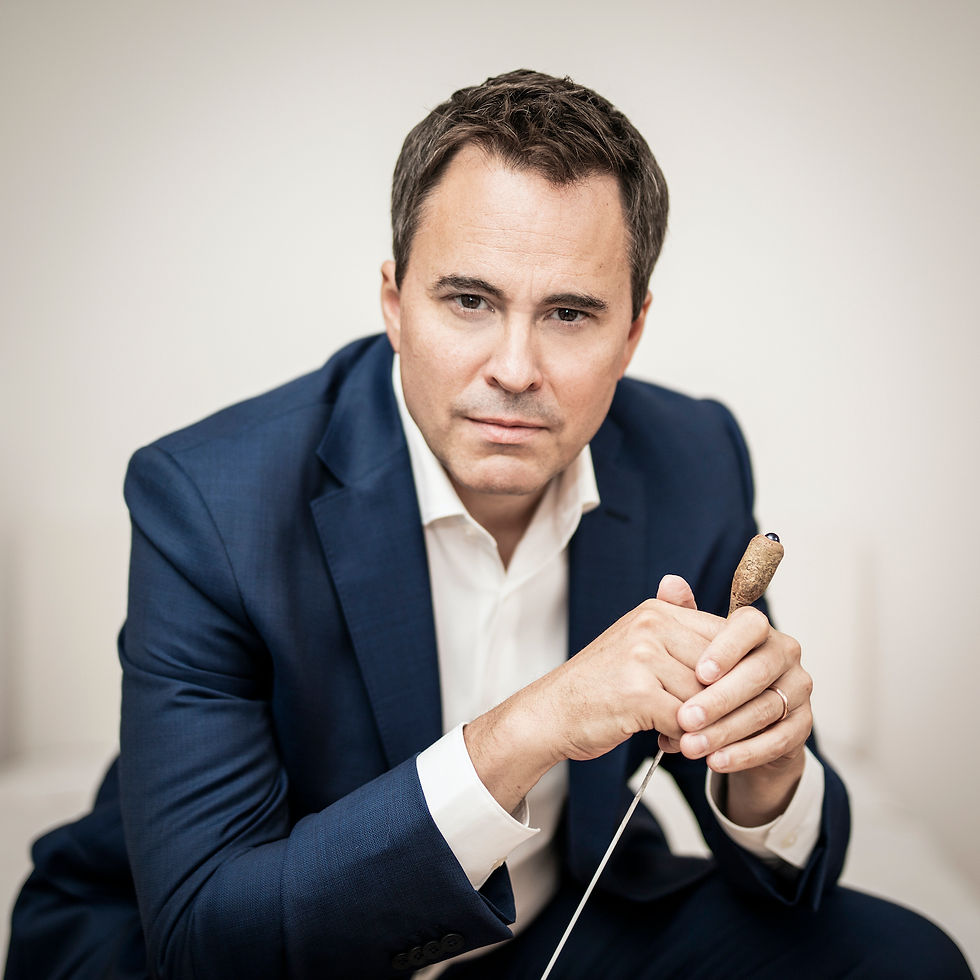
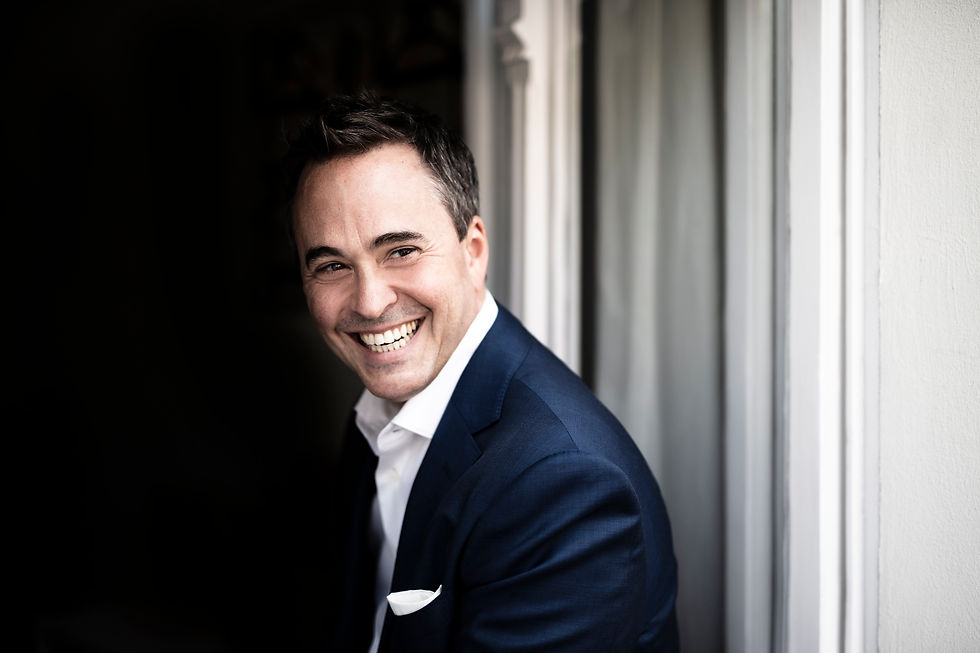
From the words of Maestro Keast, the importance of music as a connection between people resonates vividly; consequently it seems clear that it is essential to create programs, events, occasions and contexts that can allow everyone to benefit from its beneficial gift.
Among the noblest art forms, making music brings with it enormous responsibilities, first of all that of adequately conveying a message, with the awareness that everyone will operate differently in doing so.
Cinema, for example, through images accompanied by soundtracks, brings us closer, among other genres, to classical music as Maestro Keast reiterated.
I believe that the "how" and "with what means" are fundamental, certain arts are proposed especially towards the youngest, not necessarily directed and educated to a rich and complete musical culture; often the kids, out of distrust or because they are badly advised, look at this world with a bit of fear.
This is where the importance of the means of communication comes into play because they can encourage, stimulate, draw attention and interest.
Not all music is capable of evoking deep emotions and enriching cinematic experiences; but if this happens through classical music, which has always inspired new works, it is certainly easier for it to remain impressed and for people to consequently document themselves on it. This is precisely how the "mythologization" of some pieces is born.
In the Hollywood vision, the entrance on the scene of the villain is often associated with classical music, mostly to amplify and emphasize a cultured, refined but also immoral personality. This suggests sophistication to the viewer, but no less ambiguity and unreliability; it plays a counterpoint role.
Going beyond stereotypes, in truth, it can be adapted to more situations, more emotional states, more circumstances, also distancing itself from the predictable.
To give an example, Tchaikovsky is particularly favored by directors for the richness of his melodic inventiveness, and was used by Frank Capra in the last film of his career, "Pocketful of Miracles", to recreate a sort of magical, elegant and aristocratic atmosphere.
Let's not forget films like "Love and Death" by Woody Allen, who used music by Prokofiev, where a significant number of jokes, continuous parodies, brilliant dialogues and references to Russian and European culture characterize the mood.
If we talk about America, directors like Brian De Palma, Francis Ford Coppola and Martin Scorsese use/used works by Mascagni, Mozart, Bach, Wagner, Schubert in their films, just to name a few.
Kubrick used Rossini, Beethoven, Strauss, Berlioz, Khačaturjan, Ligeti.
Animated films also play an important role, with Hungarian Rhapsody No. 2 by Franz Liszt which is perhaps the most used and parodied piece in cartoons.
As you can see, classical music is everywhere and many people unconsciously love it.
Just think of Disney films, which have the same structure as operas.
Taking advantage of the opportunity, right in Berlin, the soundtrack of the Disney cartoon film "Sleeping Beauty" saw the Berliner Symphoniker at the helm; taken from the ballet "Sleeping Beauty" by Tchaikovsky with the appropriate variations.
It was recorded in stereo. In fact, it was in West Germany that the best equipment for stereo recording was found at the time.
The combination of cinema and music is therefore inseparable.
With the word "hearing" we do not only underline the ability to hear, but also and above all we define the ability to experience emotions.
When, due to limited economic availability and geographical dislocation, the public was excluded from the possibility of attending a live show, the cinema has staged several musical works in their entirety and now the availability of recordings, films, material that can give us the opportunity to view what is of interest to us, often removes that sense of exclusion that in past years was clearly more vivid.
In addition to easy accessibility, however, we must also work on an adequate capacity for openness towards new perspectives.
There are lesser-known but no less important repertoires that need to be explored, there are new talents that deserve to emerge, there is the need to continue to promote integration and equal opportunities.
Giving life to a project that unites the practical and functional part with the artistic one, requires time and tenacity.
The very fact that we are talking about a transatlantic journey with BAAM, confirms that music belongs to everyone; one of the most powerful means to bring closer even what has been separated, forgotten, neglected or unknown.
Socio-cultural contexts have seen music manipulated, exploited, censored or even demonized, but like a phoenix it is reborn every time and reveals itself through different expressions; it manages to make its way even after many years, if not centuries, from when it was composed. Even those who thought they did not have enough of a voice, through it have reached unimaginable places.
American classical music began, in the nineteenth century, its independent path from European music and during the twentieth century the U.S.A became a considerable center for the promotion of cultured music.
Some men were real points of reference, guides for musical continuity in the world and it is good, as Maestro Keast makes sure to do, to talk about them through what they have left to future generations.
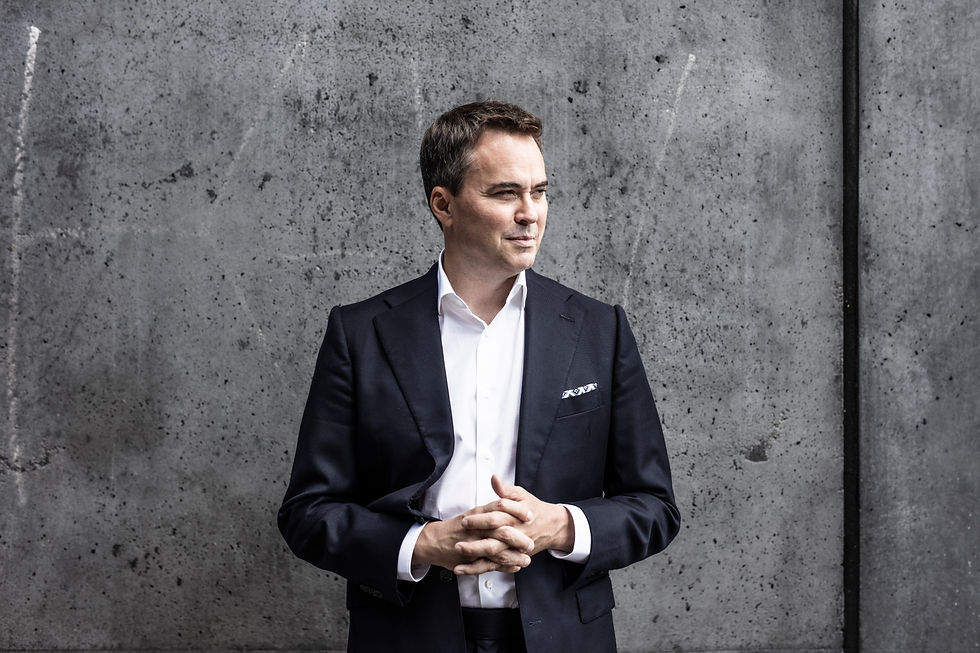
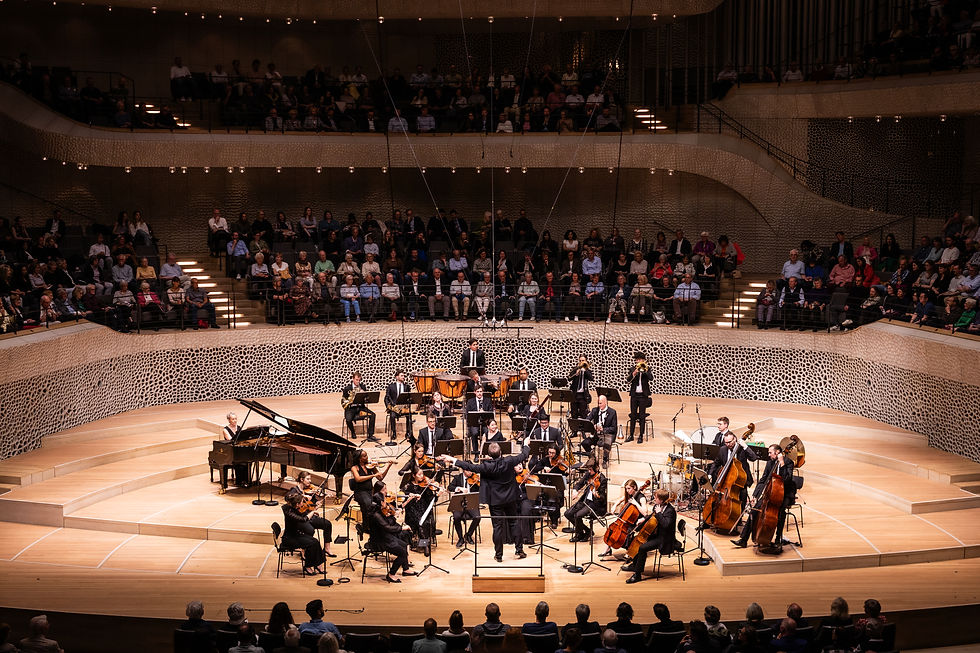
We therefore wish the Maestro and the BAAM to break every type of boundary, to emerge both as an orchestra but also as exceptional and individual individuals, each of whom is indispensable for success.
In their future, I hope that cinema can also be one of the many subsequent steps and goals.
An extraordinary person full of energy, availability and diplomacy, Maestro Keast has left everyone dreaming in front of his brilliant performances, but above all eager for a return.
I think that esteem and consensus can be perceived as soon as you have the opportunity to see him conduct.
It is said that how a conductor imposes himself on the stage with his postures, his movements, his attitude, his decorum or his gestural euphoria to musicians and listeners, reveals a lot about himself; gestures of a body that becomes an instrument, an intermediary and that embodies, personifies... what is defined as a musical idea.
"Where the hand goes, the eyes follow; where the eyes look, there the mind goes; where the mind rests, there the emotion is born; where the emotion throbs, there the essence of art is realized."
Abhy Naya Darpana
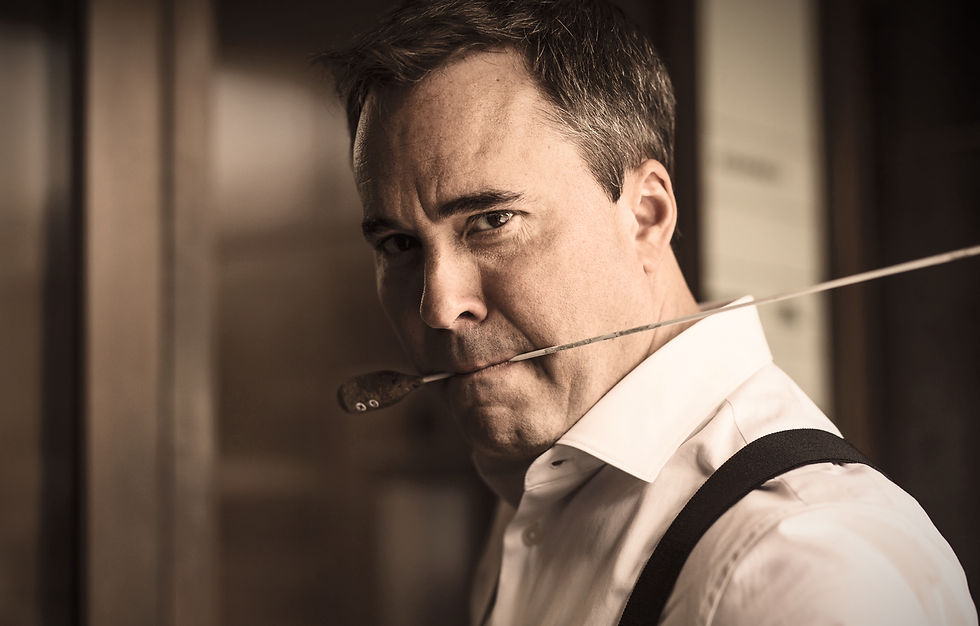
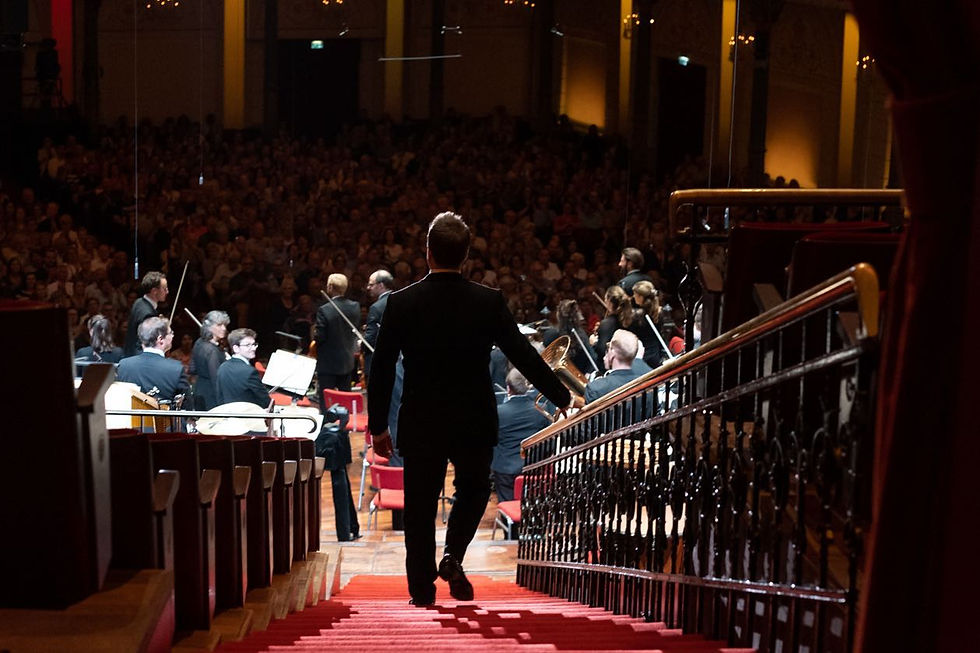
CONTACTS:

Official website: https://www.garrettkeast.com/
Facebook: https://www.facebook.com/gkconductor










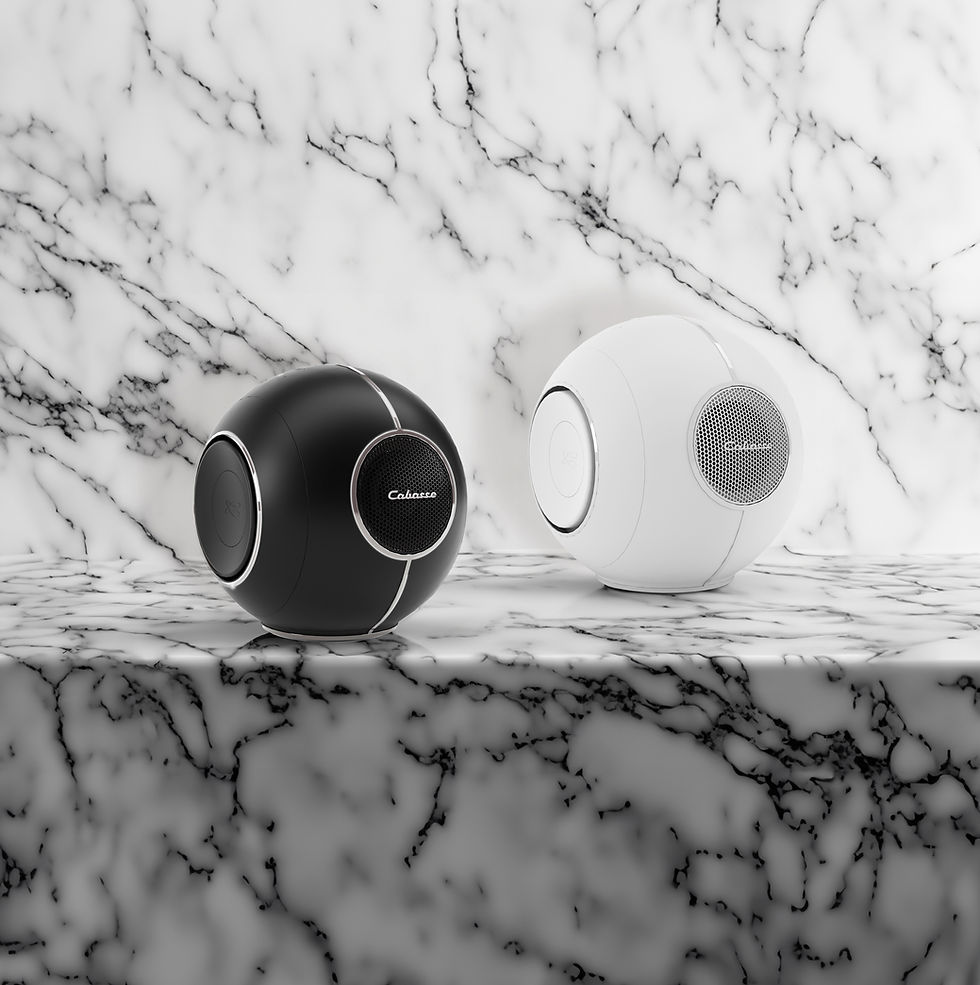

Comments